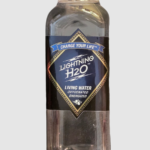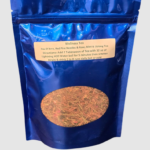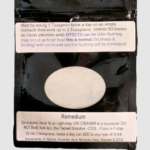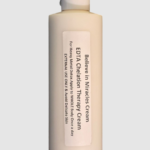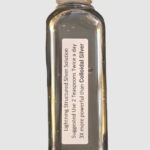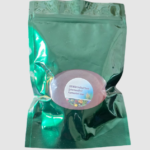William Gibney discusses turpentine oil’s historical use and efficacy in treating various diseases, mainly focusing on its effectiveness against intestinal worms. While some practitioners have found success with turpentine in worm infestations, others have dismissed it as ineffective or too harsh. The author attributes this divide to differing experiences and an overzealous promotion of turpentine’s benefits in unrelated conditions, like puerperal fever. Despite initial skepticism, the author advocates for a broader trial of turpentine as a remedy for worms, citing its rapid action and minimal dosages required. They note its potential applicability across different worm species and hope their insights will encourage its wider adoption, especially in cases where worms are wrongly suspected or misunderstood, such as in pediatric care often overseen by rural practitioners.
Gibney emphasizes the importance of using turpentine oil more frequently and in larger doses, suggesting that many practitioners still need to explore its potential due to insufficient dosing fully. They argue that proper dosage is crucial for its efficacy and that many failures may stem from inadequate administration. The oil may have unintended effects on organs like the kidneys or skin in small doses rather than targeting the intended disease area.
William recommends progressively larger doses for different age groups, asserting that even children as young as three can tolerate significant amounts. They caution against combining turpentine with other remedies that may interfere with its action or exacerbate symptoms. They advise administering it on an empty stomach and at short intervals to maximize its effectiveness. Patients must also adhere to dietary restrictions to prevent adverse reactions such as vomiting or gastrointestinal discomfort.
Despite potential resistance from overprotective caregivers, strict adherence to fasting before and after turpentine ingestion is necessary for optimal results. The author outlines a specific dosing regimen, starting with a substantial morning dose followed by hourly doses for several hours. This regimen aims to maintain a sustained effect on the intestines, potentially obviating the need for further treatment.
The doctor suggests mixing turpentine with mucilage, cinnamon water, and syrup to improve palatability and occasionally adding aromatic oils.
They discourage prescribing pure turpentine, especially for children, due to its harsh taste and potential for inducing vomiting. For individuals with delicate stomachs, evening and morning doses may be preferable, although more significant amounts may be needed to compensate for the reduced frequency.
William Gibney discusses alternative methods of administering turpentine oil for treating worms, including external application via abdominal friction and rectal enemas. They acknowledge limited personal experience with external applications but suggest combining it with internal use for best results. On the other hand, the author has tried rectal enemas with some success.
The time it takes for turpentine to show effects as they vary depending on factors such as dosage, patient constitution, and the size of the worms. Some patients may respond to a single dose with immediate improvement in stool appearance, while others may require a longer treatment course. Regardless, the author advises continuing the medication after visible signs of worms disappear, monitoring stool appearance as an indicator of treatment efficacy.
If no worms are observed after several rounds of turpentine treatment, the author advises against further administration unless there are compelling reasons to suspect under-dosing initially. Familiarity with the medication and its effects guides the decision to continue or discontinue treatment.
Gibney emphasizes the efficacy of turpentine compared to other anthelmintics, noting its almost guaranteed success in destroying worms without additional medications. They express reservations about combining turpentine with other worm remedies, suggesting that it may not enhance its effectiveness and could prolong treatment unnecessarily. While acknowledging the benefits of alternative worm treatments like dolichos pruriens, they assert that turpentine generally outperforms them in speed and effectiveness.
William highlights another advantage of turpentine over other anthelmintics: its rapid and specific action allows for a more precise diagnosis of the underlying disease, which can be highly challenging in those cases involving worms. They provide examples, including Case VI, where turpentine effectively eliminated worms despite the patient ultimately succumbing to consumption (tuberculosis). This case demonstrates the efficacy of turpentine in eradicating worms even in the absence of a positive outcome for the primary disease, as confirmed by post-mortem examination showing no remaining worms in the intestines.
Cases Cited
Case I: Mrs. Brown, a 35-year-old woman, presented with symptoms including stomach pain, nausea, vomiting worsened by activity, flatulence, colic pains, right-sided discomfort unaffected by pressure, alternating constipation and diarrhea, dark and slimy stools, occasional green stools, thirst, foul tongue with a leaden color at the root, increased urine, frequent dizziness, partial sweat, and sleep disturbances. She was prescribed a nightly pill containing mercury and aloes and a morning purgative mixture of magnesium sulfate and serince infusion.
By May 1st, her condition had improved slightly, with more regular bowel movements but still slimy and offensive stools, along with itching around the anus. She was then instructed to take turpentine oil in the morning with intervals of hourly doses.
By May 3rd, she had passed a large number of inch-long ascarides (roundworms) with an improved appetite, a cleaner tongue, and a pulse rate of 84. Turpentine oil was repeated.
After several repetitions of turpentine oil, a few more worms were expelled, and by May 11th, Mrs. Brown reported herself as fully recovered.
Case II: Mrs. B.’s child, aged two years, presented with severe abdominal pain focused around the navel, exacerbated by pressure, along with nose-picking, teeth grinding, stinky breath, sleep disturbances, jerky limb movements, flushed cheeks, high fever (pulse over 160), dyspnea, lack of appetite, swollen belly, green and slimy stools, thirst, dilated pupils, and frequent temple perspiration. The child was immediately given calomel and jalap, followed by castor oil and leeches applied to the abdomen.
By the next day, bowel movements were normalized, but nose-picking persisted, and abdominal pain remained. Leeches were reapplied, and turpentine oil was administered hourly.
On the 16th, the child showed improvement after passing a 6.5-inch long roundworm, with a reduced pulse (140) but continued abdominal swelling. Turpentine oil was repeated.
On the 17th, despite two green stools and a pulse rate of 140, the child showed some improvement but resisted taking the medicine. An enema containing turpentine and water was given.
By the 18th, with two stools and the passage of a smaller roundworm, the child was much improved and prescribed a powder containing calomel and jalap.
By the 20th, stools were more normal, and the child continued to improve, with a reduced frequency of the opening powder.
By the 27th, the child had fully recovered.
Case III: Elizabeth Bromefield, seven years old, presented with abdominal pain, constant nose-picking, sleep disturbances, stinky breath, voracious appetite including a craving for raw vegetables and fruits, and slimy stools. She had been unwell for about a month. Turpentine oil was immediately prescribed with hourly doses.
By the 19th, Elizabeth showed significant improvement after passing an 8-inch-long roundworm the day before. Turpentine oil was repeated the next morning.
By July 24th, no more worms were passed, and Elizabeth’s stools had returned to a normal color. She appeared to be in good health.
Case IV: Mary Anne James, 20 years old, had a history of frequent small worm infestations, chronic constipation, anal itching, hysterical symptoms, headaches, abnormal appetite, transient abdominal pains, and sleep disturbances. Her stools were dark in color. She was prescribed turpentine oil in the morning and evening with cinnamon water and ginger syrup.
By the 8th, after four doses of turpentine oil, Mary Anne passed many roundworms. The turpentine oil was repeated.
By the 15th, Mary Anne reported significant improvement, with no further worms passed.
By the 25th, although she had not passed any more worms, Mary Anne still experienced occasional constipation.
Case V: Mrs. Watkins’ child, nine years old, presented with abdominal swelling, pain around the umbilicus, jerky limb movements, sleep disturbances, green and slimy stools (sometimes normal), voracious appetite, and constant nose-picking. Apart from these symptoms, the child was generally well. Turpentine oil was prescribed in the morning, with hourly doses until midday.
By the 3rd, the child showed improvement, although the medication induced vomiting without expelling any worms. Turpentine oil was then prescribed in the evening and the next morning.
By the 5th, after passing a roundworm the previous night, the child reported feeling much better. Turpentine oil was repeated as prescribed.
By the 12th, no more worms were observed, and the child was completely recovered.
Case VI: Mrs. Hill’s boy, five years old, presented with extreme emaciation, ongoing whooping cough with purulent expectoration, abdominal swelling, sleep disturbances, nose-picking leading to superficial bleeding, stinky breath, fever, thirst, restlessness, dilated pupils, and irregular stools ranging from slimy to green, black, or normal. His pulse was over 150, and his tongue had a foul, leaden hue. Turpentine oil was prescribed in the morning with hourly doses until midday, along with tepid baths.
By the 3rd, with regular bowel movements, the treatment was repeated.
By the 4th, the child showed signs of intolerance to light, restlessness, poor sleep, persistent cough, purulent expectoration, increased pulse (160), copious perspiration, and thirst, with no appetite but normal stools. The treatment was repeated, including a bedtime bath and turpentine oil the next morning.
By the 5th, after passing a 9-inch-long roundworm, the child seemed slightly improved. Calomel and scammony powder were prescribed at bedtime, followed by castor oil in the morning.
By the 9th, stools were becoming more natural, but purulent expectoration persisted, and the child’s weakness increased. Additional powders were prescribed as needed.
By the 13th, green and slimy stools, ongoing nose-picking, and extreme weakness prevented expectoration, so the treatment was repeated.
By the 14th, after passing another 9-inch-long roundworm, the child showed slight improvement but remained extremely weak and emaciated.
By the 20th, with slightly more normal stools but an evident decline, tragacanth powder was prescribed three times daily.
On the 23rd, the child passed away, having had a natural stool shortly before death. Upon dissection, an enlarged liver with serous effusion, mesenteric gland enlargement, tubercles on the lungs, lung abscesses, and pericardial effusion were found, with no worms in the intestines.
Despite turpentine treatment and other remedies for tuberculosis, the child’s condition did not improve.
Case VII: Mrs. Hague’s 3-year-old son complained of constant pain in his lower belly, abdominal swelling, nose-picking, sleep disturbances with convulsions, reduced appetite, dark, slimy, and foul-smelling stools, normal urine output, lying with a hand under his head as if in pain, foul tongue, thirst, a leaden cast between his eyes, sharp features, and swollen lips with frequent picking. Turpentine oil was prescribed hourly until midday.
By the 18th, despite no worms being passed, the abdominal pain persisted along with other symptoms. Calomel and scammony powder were prescribed nightly, and turpentine oil was repeated in the morning.
By the 25th, although the child had been effectively purged, symptoms persisted, and stool color did not improve. Turpentine oil was given immediately and repeated hourly until midday.
On the 26th, a 6.5-inch-long roundworm was found in the child’s bed, and his condition improved.
By the 28th, appetite improved, stools became more natural, and the child appeared livelier. Turpentine oil was repeated.
By February 5th, no more worms were passed, and the child seemed completely well.
The doctor notes that starting with a larger turpentine dose may have shortened the duration of the illness, but they opted for caution with the child’s age. They acknowledge not discussing turpentine’s general effects on the body, its mode of action against worms, or the broader symptoms caused by worms due to space constraints but hint at its efficacy in other diseases.
A young lady, aged fifteen, suffered from constant vomiting for eighteen months, unable to retain anything on her stomach except small amounts of gruel or broth when half asleep. Even a simple biscuit would be promptly rejected. Despite numerous medications, her condition worsened, and she became emaciated. After consulting renowned physicians who prescribed turpentine, she experienced initial discomfort and stomach pain, but her vomiting ceased after just two doses. Nearly two years later, she remained completely recovered in terms of health and strength, with all other bodily functions returning to normal.
Original reports published in 1822

